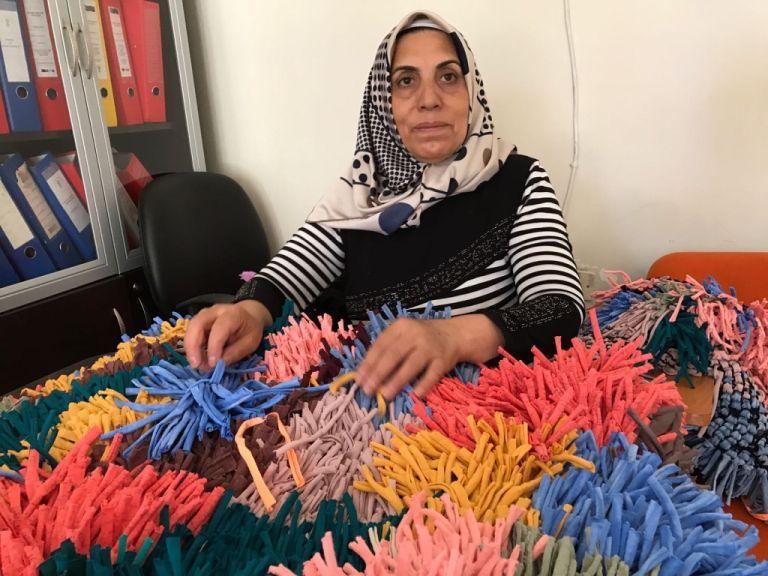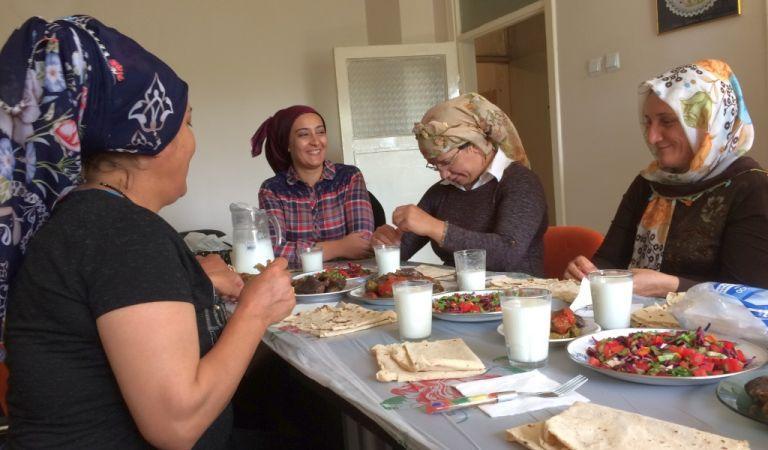Crossing Borders – Part 1, Ragamuf
Let me tell you a story of great design thinking. Finnish designer Tuula Pöyhönen was staying in an artist residency in Edinburgh with her two sons. The weather was poor so the kids were playing games sitting on a worn-out sofa. That ugly sofa bothered Tuula’s sensibilities and she soon came up with the concept of a rag that would cover all that ugliness.
Next winter she travelled to Fez, Morocco, with the idea of starting the rug production there as her design was related to the Boucherouite carpets traditionally woven by Berber women at home.
As Tuula was waiting for the prototype, a Finnish entrepreneur Martta Leskelä contacted her. Martta was starting up her business in Turkey. She wanted to create a production line of textile products in the means of employing Syrian refugee women living in Turkey.
She wanted to have an impact on their insecure lives.
Her first idea was to produce coats with decorations handmade by the women.
This is where the design thinking comes along. As a fashion designer, Tuula saw the big picture and knocked down the coat idea. To create a coat production line is a complex entity of industrial production and retail business of the end product.
By chance, her simpler rug concept fitted perfectly with Martta’s ethical business views. The way of making Tuula’s creation fitted perfectly to the circumstances in the refugee homes with no machinery or tools other than hands. That was the beginning of the Ragamuf furniture rug.

The way of making Ragamuf furniture rug fits perfectly to the circumstances in the refugee homes with no machinery or tools other than hands. Photo Timo Junttila
Ragamuf is using surplus materials from the textile industry that is vast in Turkey.
Tuula’s crucial idea is to let the women be part of the design process by adding their own ideas of colours and motifs.
Instantly, the monotonic handiwork becomes more meaningful and the product more personal.
Tuula made one prototype herself to calculate how long the handiwork took and to make instructions for the women. Then she travelled to Turkey with Martta to meet the women who were highly motivated to get work which could be done at in what you call your home also with the children present. That encounter was the key point in the whole process. For Tuula it was very important to get to know them, to eat the same food and share some part of their life. To learn from each other.
That’s what great design thinking is about.
If you now start thinking about possible child labour, you should think about the big picture and trust the company’s ethics. Tuula’s and Martta’s journey creates functional and meaningful products with a sustainable life-cycle. And, not to mention, the impact on the refugee women’s life.

For Designer Tuula Pöyhönen it was very important to get to know Syrian refugee women, to eat the same food and share some part of their life. To learn from each other. Photo Timo Junttila
Tuula Pöyhönen told Ragamuf’s story in Crossing Borders event.
Ragamuf is one of the objects in the Design Museum and the Finnish Association of Designers Ornamo’s joint exhibition Enter and Encounter that showcases Finnish contemporary design. The exhibition is open in Designmuseum until 20 October 2017.
You can search professional designers in Finland at finnishdesigners.fi.
